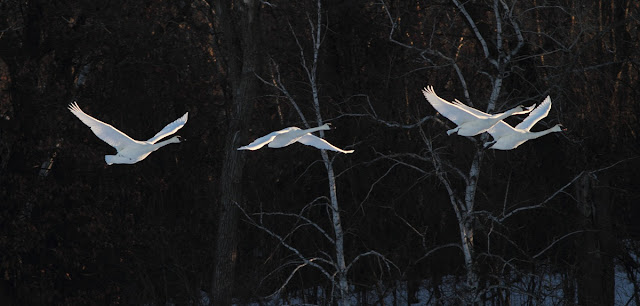Cool Imagery 26 January 2013
The game is a good one. Wake early, walk slowly, and stay warm. Plan and conserve. Keep fingers alive. Use a tripod. Plan each exposure and make art. Plan each step and stay safe. Look high. Look low. Perspective is everything.
I am an animal photographer. I shoot from the arm, shoot fast, and shoot wide-open. I have grown used to stalking and planning to intercept the usual routines of animals I have come to know. As for landscape imagery, I have learned this other craft over time and with reluctance. Capturing the personality of a landscape is a completely different challenge, but at least there is time to contemplate the nature of the art here. The necessity of the tripod has evolved into a love for the opportunity it creates and the pensive moments that draw me deeply into the subject matter of nature.
All images were made at 0 degrees Fahrenheit, using the Canon 7D, a remote trigger, and the "kit" Canon 28 to 135mm lens. I kept it stable on a Gitzo basalt fiber tripod with Gitzo ball head. I was delighted to learn that the Canon 7D has an internal camera level that is identical to the horizon gauge used by pilots. To maximize depth of field and to blur moving water, I stopped down to f22. Bruce Leventhal has been a tremendous mentor in my pursuit of landscapes, my newly found joy in making such images, and my growing understanding of how cameras are supposed to work. Thanks ol' friend! Check out www.bruceleventhal.blogspot.com


























.jpg)




















